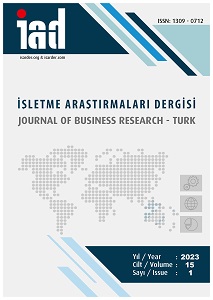Tahıl Emtia Fiyat Oynaklığının Markov Değişim Asimetrik Garch Modelleriyle İncelenmesi
Investigation of Grain Commodity Price Volatility Using Markov Switching Asymmetric Garch Models
Author(s): Hüseyin Özer, İkram Yusuf YarbaşıSubject(s): Business Economy / Management, Financial Markets
Published by: Orhan Sağçolak
Keywords: Volatility; Regime Change; Assymetric Markov; Switching GARCH; Grain Commodity;
Summary/Abstract: Purpose – Financial market volatility plays an important role as an indicator of both economic performance and financial stability. Alternative GARCH type time series models have been one of the most preferred approaches to achieve this goal. The use of the MS-GARCH approach has also emerged in modeling the structural changes in financial time series. This study aims to contribute to the empirical literature by modeling the volatility of the returns of the four main grain commodities (wheat, oats, corn and soybeans) traded in the futures grain commodity markets with asymmetric MS-GARCH structures. Design/methodology/approach – For the purpose of the research, volatility analyzes were performed for four grain commodities using asymmetric MS-GARCH models. The data sets used in the research were obtained from the investing.com database on a daily basis and cover the period of 2014-2022. RStudio 2022.07.2 program was used in the analysis of the research. Findings – According to the results obtained from the asymmetric MS-GARCH models performed in the study, the existence of persistent regime structures was determined in wheat, oat, corn and soybean commodities. It was concluded that commodity returns remained in the low volatility period when they were in the low volatility period or again in the high volatility period when they were in the high volatility period. It has been determined that negative shocks that occur when all commodities are in the low volatility regime have more impact on volatility than positive shocks. It has been determined that there is a leverage effect on the grain commodity returns. It was observed that wheat yields were 25%, corn yields 21%, soybean yields 1.2% and oat yields 12% in high volatility period. Discussion – The use of MS-GARCH type models, which enable the analysis of price volatility according to different regime structures, will enable more precise predictions to be made in an environment of high uncertainty, and reduce the risks that may occur.
Journal: İşletme Araştırmaları Dergisi
- Issue Year: 15/2023
- Issue No: 1
- Page Range: 500-513
- Page Count: 14
- Language: Turkish

